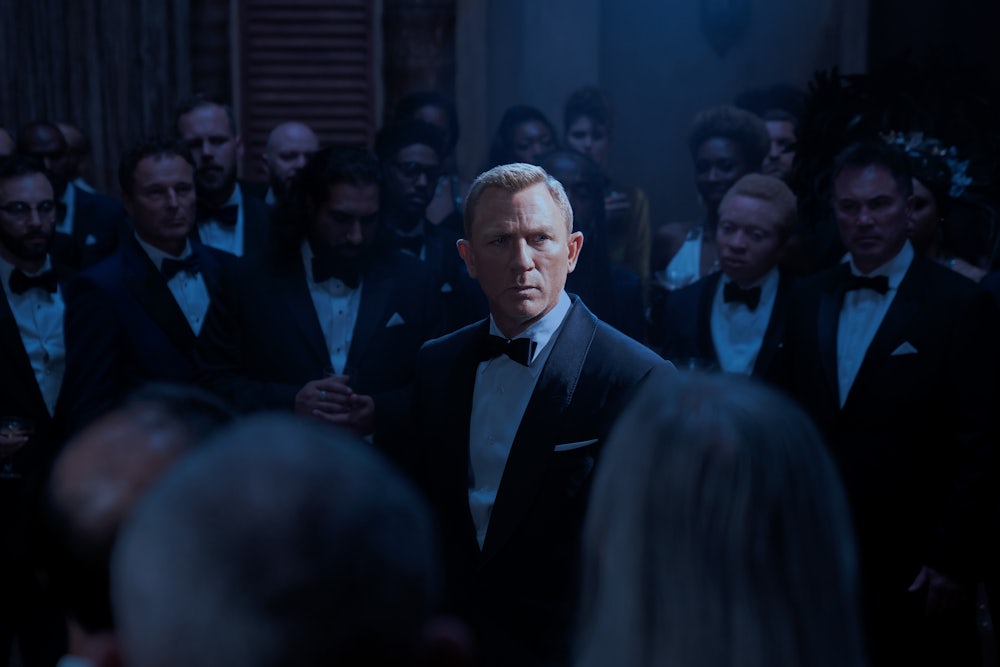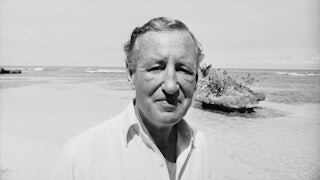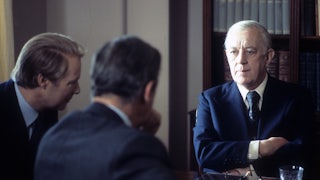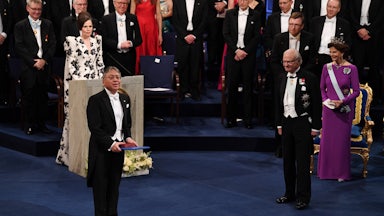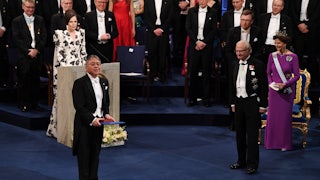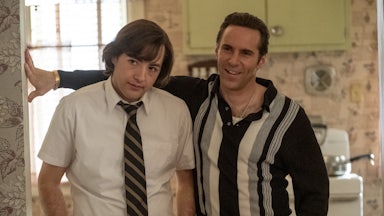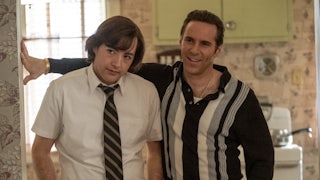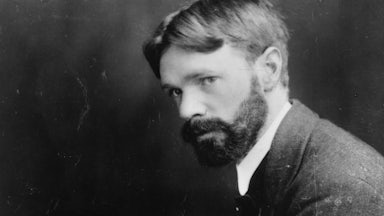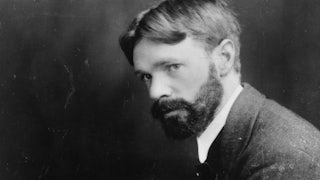In the course of researching this review of the new James Bond movie, No Time to Die, starring Daniel Craig, I rewatched License to Kill (1989), one of my favorites. In it, Timothy Dalton is a dark Bond, a grieving thug running amok in the fictional Republic of Isthmus after the murder of his friend, and the closest forerunner to Craig’s gritty debut in Casino Royale (2006). About halfway into the film, however, there came a moment I had never noticed before. It’s night, and Bond is rappelling softly down the ornamented facade of a casino to seek revenge on his friend’s killers. At the same time as his hand comes to rest on the bare breast of a mermaid depicted in statuary on the front of the building, a car sounds its horn in the street below. Dalton pauses, smirking into the night. The moment is unmistakeable: a boob honk.
I paused the movie, took a breath, and wondered exactly how to go about writing a serious review of a boob-honking franchise. One might argue that the topless mermaid is a figure of the anonymous Bond girl, frozen into an immutable stereotype, in contrast to “James Bond,” an entity so powerful that he transcends the limitations of individual actors and moments in history. But it’s the sheer absurdity of this joke, which is an extreme example of Bond’s signature smutty puns (like the line, “I thought Christmas only comes once a year,” delivered to a girl named Christmas), that seems to shield Bond from serious contemplation, giving him a curiously hard surface, even a callous quality—one that shrugs off all critical gazes.
For there is a comic Bond and a tragic Bond, and one won’t let you forget the other for long: As soon as Bond achieves any kind of emotional depth or dimensionality, traditionally, he will lash out with a boob honk and cut the tension dead. This resistant, comic Bond is the one Scott Bradfield recently described as “skin-deep” in Fleming’s novels: a man who has “no depths worth exploring; he is a cold, detached observer of men, women, bedrooms, casino decor, and meals,” “a hard, fetishized surface of clothes and ingrained affectations.” Sean Connery, who played the first movie Bond in Dr. No, in 1962, is the ultimate author of this style. In 1968, he told journalist Oriana Fallaci that he demanded to play the role “tongue-in-cheek, so people could laugh” and ultimately accept Bond’s existence more easily. The result, he said, is that “today” (meaning 1968, but it’s certainly also true now), “Bond is accepted to such an extent that even philosophers take the trouble to analyze him, even intellectuals enjoy defending him or attacking him.”
Connery did not think his flippancy made Bond minor, but the opposite. “Bond is important,” he said: “this invincible superman that every man would like to copy, that every woman would like to conquer, this dream we all have of survival.” That hint of existential problems and ghosts flitting around the glam spy game is exactly what the puns and crude humor continually yank us back from—the brink of the deeper, tragic Bond. This is the Bond who is married and widowed in short order in On Her Majesty’s Secret Service (1969) and, boob-honking aside, battles his grief in Licence to Kill and The Living Daylights. The tragic Bond movie takes us on dark adventures, in which the hero goes rogue and his loyalty to the British government wavers. These Bond movies take themselves quite seriously, as if to distinguish 007 from Austin Powers in the 2000s and Indiana Jones in the 1980s, both of whom do their own spin on Bond.
Léa Seydoux, who plays Madeleine Swann, the love interest in No Time to Die, has even celebrated the fact that Bond is less, as she charmingly puts it, “misogyne” during Craig’s tenure—a sure sign that the comic Bond’s carapace has softened somewhat. No Time to Die is, like all of the Daniel Craig movies, a mostly tragic film, since the movie culture of the 2000s required that he achieve some Christopher Nolan–level complexity in order to be a hit.
But it is her character, Madeleine, not Bond, who compromises the order of this highly organized and copyrighted universe. She does what no Bond girl has done before, violating the division between the tragic and the comic Bonds, refusing to melt off the edges of the screen and into oblivion. Instead of simply dying off, she does something surprising, even brutal: She makes him a father.
No Time to Die is the twenty-fifth Bond movie since the series began in 1962 with Dr. No, and it will be the last of five to star Daniel Craig, the seventh man to play cinema’s most famous spy, and the only blond—Roger Moore, a natural towhead, dyed his hair darker for all seven of his Bond roles.
Like the idea of a blond Bond, No Time to Die is a new film about an old character, and hence an
odd jumble of cutting edge and old hat. There are old familiar names in the
credits, like Neal Purvis and Robert Wade, longtime scriptmen for Bond, and
Barbara Broccoli, whose father co-produced all the movies until she took over
with her stepbrother, Michael Wilson. But director Cary Joji Fukunaga brings his flair for cool (True
Detective) to the project, and Fleabag’s Phoebe Waller-Bridge was, notably, brought in in 2019 to punch up the dialogue; you could hear
traces of Moneypenny and Bond in
the cheeky, edge-of-insulting humor she developed in that
show, and she returns the favor in No Time to Die with a set of
punch lines pitched considerably above boob-honk level.
The movie starts with a flashback to the blissful period that James and Madeleine spent in love in Matera, a gorgeous little town sprinkled on top of a hill in Italy. It’s the sort of place where the road wraps around the peak, creating a layer cake of streets, piled on top of each other—a feature Bond makes breathtaking use of when, perched on a motorcycle, he makes it jump up a level, before dropping the bike and striding away like a supermodel from the 1990s. They are here, it turns out, because Vesper Lynd (Eva Green)—love interest from Casino Royale and the woman who broke Bond’s plastic heart—is buried here. Madeleine, sounding suspiciously like a human woman, insists that Bond process his trauma around Lynd’s death. As he goes to visit her grave, Matera appears in sumptuous textures of stone, cloth, trees, and sunlight.
But a mysterious explosion scuppers the couple’s plans, and James, feeling betrayed, leaves Madeleine. Cut to five years later, and we see a single Bond living in retirement on an island in the Caribbean, then lured out of it by his old friend in the CIA, Felix Leiter (Jeffrey Wright). The mission Leiter sends him on burgeons into a whole slew of missions, ultimately connected, Bond slowly realizes, by the woman he thought he had left behind. There’s a dangerous new bioweapon at stake, one sufficiently related to viruses to feel pandemic-related, whose history reveals terrible errors of judgment by the British government. “We never meant to create a weapon of mass destruction,” says M (Ralph Fiennes), driving home the point and delivering the note of hypocrisy and cynicism that civil servants, Bond’s secretary Moneypenny (Naomie Harris) included, exist in the stories to deliver.
Speaking of civil servants, No Time to Die introduces us to a new source of energy: Nomi, a much younger woman, who is the new 007. Bond relinquished his number when he retired, and cosmic justice dictates that his replacement should be an existential threat to all he represents. Played with controlled but joyful physical exuberance by Lashana Lynch, who is also slated to be Miss Honey in next year’s Matilda remake, Nomi needles Bond with delicious precision. “Does that bother you?” she asks, after explaining that she’s 007 now, before he (of course) sidles his way back into the job title, pushing Nomi into a more marginal role than strictly necessary. There can only be one 007 per movie, after all, and Craig has not surrendered the bow tie yet.
As Umberto Eco put it in his classic essay about Fleming’s novels, all Bond stories have an element of the hackneyed or overly familiar about them, because they run on a formula. “In Casino Royale,” the first Bond novel, Eco writes, “there are already all the elements for the building of a machine that would function basically as a unit along very simple, straight lines, conforming to the strict rules of combination.” James Bond will order a martini, shaken not stirred, and say, “Bond, James Bond,” at some point. “Bond always gambles and wins, against the Villain or with some vicarious figure.” The villain, Eco goes on, is always “born in an ethnic area that stretches from central Europe to the Slav countries and to the Mediterranean basin,” and “he is asexual or homosexual, or at any rate is not sexually normal.”
In these respects, No Time to Die is a classic. The main antagonist is Lyutsifer Safin, played by Rami Malek, who prunes flowers in his private island lair in a manner the Financial Times calls “lispingly clichéd.” As with every Bond villain, Safin’s face is scarred, continuing the long tradition of facial difference that marks out evil in the Bond universe. One of his henchmen even has an artificial eye and the nickname Cyclops: Among the many disabilities invoked in the Bond movies, blindness is the most symbolic, as it represents the lack of judgment exhibited by SPECTRE, SMERSH, and all the other crime syndicates that drift in and out of focus.
The relationship of women to villainy in the Bond universe is complicated. Eco observes that Bond’s classic love interest, wrenched from the arms of his enemy, invariably “has already been previously conditioned to domination,” Eco writes, “life for her having assumed the role of the villain.” In No Time to Die, this is largely true: Madeleine does have a deep, secret connection to Safin, and her motives are ambiguous for most of the film. But everything changes when she introduces Bond to Mathilde, a little girl with curly mid-brown hair and bright blue eyes. “She’s not yours,” Madeleine says, firmly, implying that she is.
Bond has never previously become a father in the movies, although he is a reluctant husband and dad in Fleming’s books. There was a distinctly unglamorous side, in fact, to Fleming’s Bond. As Bradfield has pointed out, Bond writes a farewell letter to a woman named Viv at the end of the novel The Spy Who Loved Me (1962), in which he “advises her to check her car’s tire pressure.” Of all the aspects of Fleming’s Bond, this is the one most heavily censored from the movies—the mundane, the fatherly.
It’s simply too much to let this immortal character sow a fixed, biological relationship to other people in his world—he cannot sustain it. Bond is supposed to remain mobile, mechanical, seesawing between intense feelings and very shallow punch lines, unhindered by family connections. By making him into a dad, in this film, Bond’s beloved Madeleine Swann as good as seals his fate: James Bond as he exists in cinema now cannot coexist with an identity as a dad, a person who has any connection through his children to the future. It’s almost a murder. He has to die.
As a way to pull the curtain down on an era, fatherhood is highly effective—though this serious, emotional Bond is about 20 percent less fun to watch than his tragicomic predecessors. Fortunately, Nomi’s presence in the film—along with the fact that, finally, Ben Whishaw as Q has been allowed to play the character as gay—suggests a new and bright future for the franchise. Even if all the production details change, and Lashana Lynch herself never becomes the next Bond, the sheer efficacy of her presence and the way she makes Seydoux and Craig look dull beside her suggests the possibility of a Bond with more to say than “shaken, not stirred” and a range of emotions greater than two.
